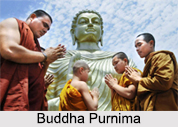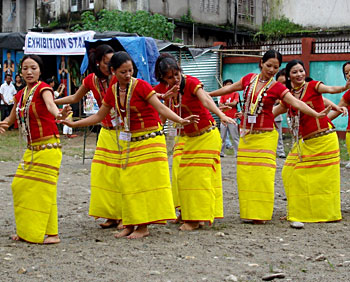 Muharram is the tenth day of the first Muslim month. It commemorates the martyrdom of the Prophet`s grandson Hussain and the battle at Karbala in 680 CE. The long Muharram processions with their Taziahs (gorgeous replicas of the martyr`s tomb), masked dancers and colourful crowds; give the appearance of a happy festival. However in reality the apparent pageant is an expression of grief and distress. After the death of the Prophet, the question of succession arose. Islam believes in the finality of Muhammad in the prophetic tradition. One faction maintained that succession could remain only in the Prophet`s family while another faction rejected this. Muhammad himself named no successor.
Muharram is the tenth day of the first Muslim month. It commemorates the martyrdom of the Prophet`s grandson Hussain and the battle at Karbala in 680 CE. The long Muharram processions with their Taziahs (gorgeous replicas of the martyr`s tomb), masked dancers and colourful crowds; give the appearance of a happy festival. However in reality the apparent pageant is an expression of grief and distress. After the death of the Prophet, the question of succession arose. Islam believes in the finality of Muhammad in the prophetic tradition. One faction maintained that succession could remain only in the Prophet`s family while another faction rejected this. Muhammad himself named no successor.
In the end, Abu Bakr, who had been a staunch ally of the Prophet during the early days of his mission, was elected Caliph through and through an able man. During his reign Umar and Uthman were assassinated. When Ali was elected the fourth Caliph, there was open rebellion. Ali too was assassinated. His son Hasan, who succeeded him, was poisoned. Now the war of succession assumed serious proportions. Hussein, Ali`s other son, was killed in action under tragic circumstances at the battle of Karbala.
 The Shias consider the killing of Hussein at Karbala a particularly heinous crime and give themselves up to public lamentations during Muharram. Since Hussein was martyred on the tenth day of Muharram, the first ten days are spent in fasting, prayer and mourning. A procession is taken out on the 10th day, and the mourners give themselves up to frenzied expressions of grief. A horse is led in the procession, along with the Taziahs, in memory of Husseins`s horse Dul Dul.
The Shias consider the killing of Hussein at Karbala a particularly heinous crime and give themselves up to public lamentations during Muharram. Since Hussein was martyred on the tenth day of Muharram, the first ten days are spent in fasting, prayer and mourning. A procession is taken out on the 10th day, and the mourners give themselves up to frenzied expressions of grief. A horse is led in the procession, along with the Taziahs, in memory of Husseins`s horse Dul Dul.
Some parts of India have masked dancers included who lead the procession. After the procession, the Taziahs are buried or sunk in tanks, rivers or the sea where a person does not have to fast for the whole month. On the contrary, each fast during this month has merit. Muslims observe fast on this day; giving as much charity as he can afford; performs Nafl Salat prayers and recites Surah Ikhlas 1000 times. Some sects of Muslims hold meetings where speeches are made on the happenings of Karbala and on the lives of martyrs.
 The Shias observe this festival in a different fashion. They put on black clothes, as black is regarded as a colour of mourning. Majalis (assemblies) are held every day during the first nine days where Shia orators relate the incident of the martyrdom of Hazrat Imam Hussein and his party in a great detail. On the 10th day of Muharram, large processions are formed and the devoted followers parade the streets holding banners and carrying models of the mausoleum of Hazrat Imam Hussein and his people, who fell at Karbala. They show their grief and sorrow by inflicting wounds on their own bodies with sharp metal tied to chains with which they scourge themselves. This is done in order to depict the sufferings of the martyrs.
The Shias observe this festival in a different fashion. They put on black clothes, as black is regarded as a colour of mourning. Majalis (assemblies) are held every day during the first nine days where Shia orators relate the incident of the martyrdom of Hazrat Imam Hussein and his party in a great detail. On the 10th day of Muharram, large processions are formed and the devoted followers parade the streets holding banners and carrying models of the mausoleum of Hazrat Imam Hussein and his people, who fell at Karbala. They show their grief and sorrow by inflicting wounds on their own bodies with sharp metal tied to chains with which they scourge themselves. This is done in order to depict the sufferings of the martyrs.
It is a sad occasion and everyone in the procession chants "Ya Hussein", with loud wails of lamentation. Generally, a white horse beautifully decorated for the occasion is also included in the procession, to mark the empty mount of Hazrat Imam Hussein after his martyrdom.
Some of the elegies sung by the Shias especially in Uttar Pradesh in their Muharram procession include uncomplimentary references to certain Caliphs, held in honour by the Sunnis who register the protest by pelting the singers with stones. The Muslims also believe that Allah created Adam and Eve on the tenth day of Muharram. Mosques provide free meals (nazar) on certain nights of the month to all people.



















